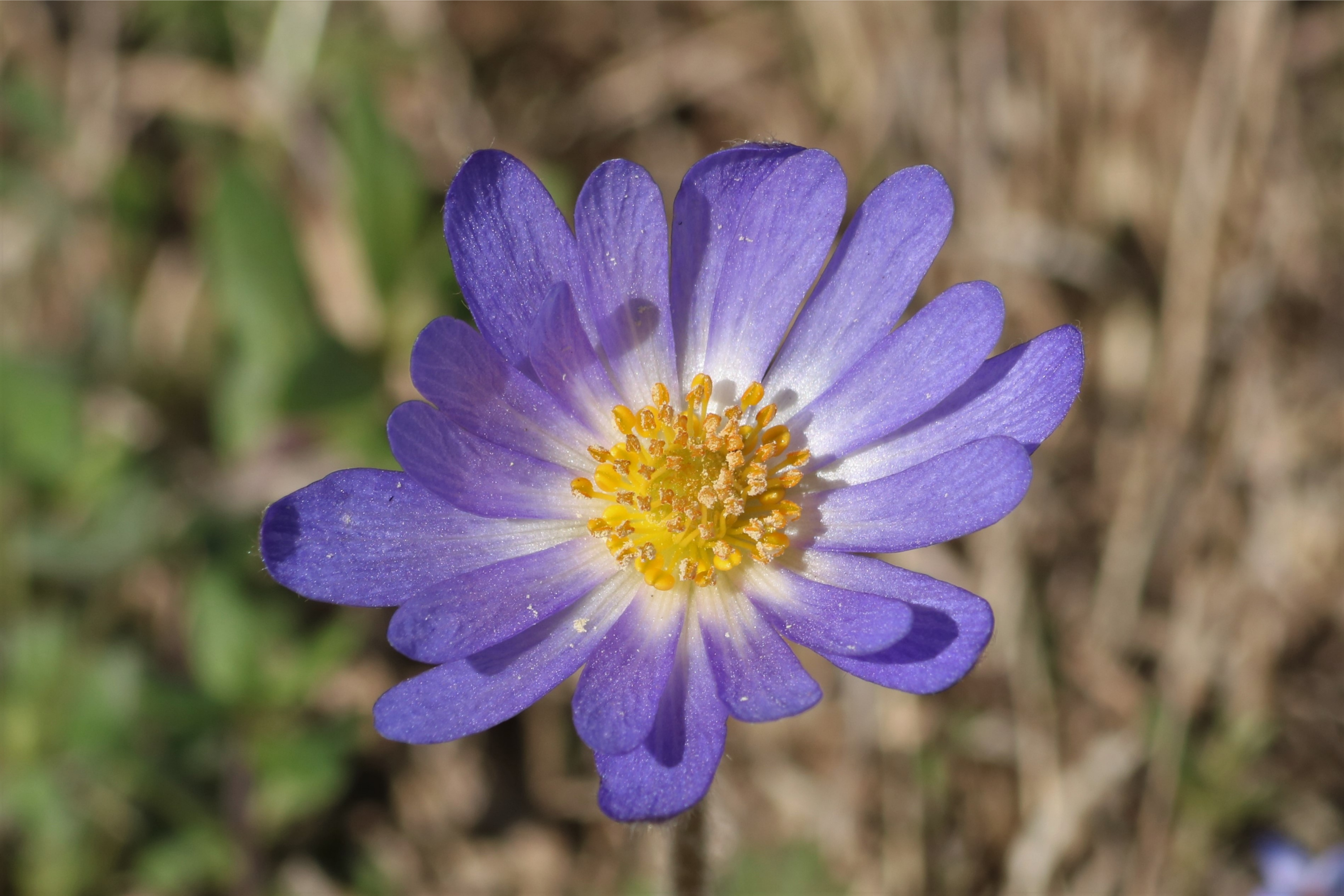Carolina anemone
(Anemone caroliniana)

Description
Anemone caroliniana, the Carolina anemone, is a species of herbaceous flowering plant in the family Ranunculaceae. Plants grow (7)10 to 40 cm tall, from short tuber-like rhizomes that are 10–30 mm long. Stem leaves without petioles. Plants flowering early to mid spring with the flowers composed of 10 to 20 sepals (sometimes called tepals) normally white or soft rose colored but also purple, one flower per stem, the sepals are 10 to 22 mm long and 2–5 mm wide. Fruits in heads ovoid to subcylindric in shape, 17–25 mm long. Anemone caroliniana is native to central and south eastern parts of the U.S., primarily in the Great Plains and the Mississippi Valley with scattered populations in the Southeast from Tennessee and Mississippi to the Carolinas. Anemone caroliniana was at one time recorded from Vigo County, Indiana, but has since become locally extinct in that state. Anemone caroliniana is found growing in dry prairies, barrens and open rocky woods. Anemone is a genus of flowering plants in the buttercup family Ranunculaceae. Plants of the genus are commonly called windflowers. They are native to the temperate and subtropical regions of all continents except Australia, New Zealand and Antarctica. The genus is closely related to several other genera including Anemonoides, Anemonastrum, Hepatica, and Pulsatilla. Some botanists include these genera within Anemone. Anemone are perennials that have basal leaves with long leaf-stems that can be upright or prostrate. Leaves are simple or compound with lobed, parted, or undivided leaf blades. The leaf margins are toothed or entire. Flowers with 4–27 sepals are produced singly, in cymes of 2–9 flowers, or in umbels, above a cluster of leaf- or sepal-like bracts. Sepals may be any color. The pistils have one ovule. The flowers have nectaries, but petals are missing in the majority of species. The fruits are ovoid to obovoid shaped achenes that are collected together in a tight cluster, ending variously lengthened stalks; though many species have sessile clusters terminating the stems. The achenes are beaked and some species have feathery hairs attached to them. Anemone was named by Carl Linnaeus in 1753 and is situated in the tribe Anemoneae, subfamily Ranunculoideae, and the family Ranunculaceae. As considered in the broader sense (sensu lato) the genus is sometimes considered to include a number of other genera, such as Anemonoides, Anemonastrum, Hepatica, Pulsatilla, Knowltonia, Barneoudia, and Oreithales.
Taxonomic tree:







